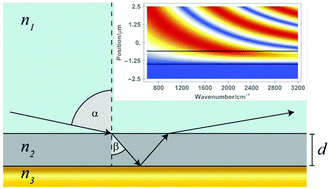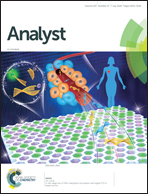Removing interference-based effects from the infrared transflectance spectra of thin films on metallic substrates: a fast and wave optics conform solution†
Abstract
A hybrid formalism combining elements from Kramers–Kronig based analyses and dispersion analysis was developed, which allows removing interference-based effects in the infrared spectra of layers on highly reflecting substrates. In order to enable a highly convenient application, the correction procedure is fully automatized and usually requires less than a minute with non-optimized software on a typical office PC. The formalism was tested with both synthetic and experimental spectra of poly(methyl methacrylate) on gold. The results confirmed the usefulness of the formalism: apparent peak ratios as well as the interference fringes in the original spectra were successfully corrected. Accordingly, the introduced formalism makes it possible to use inexpensive and robust highly reflecting substrates for routine infrared spectroscopic investigations of layers or films the thickness of which is limited by the imperative that reflectance absorbance must be smaller than about 1. For thicker films the formalism is still useful, but requires estimates for the optical constants.



 Please wait while we load your content...
Please wait while we load your content...